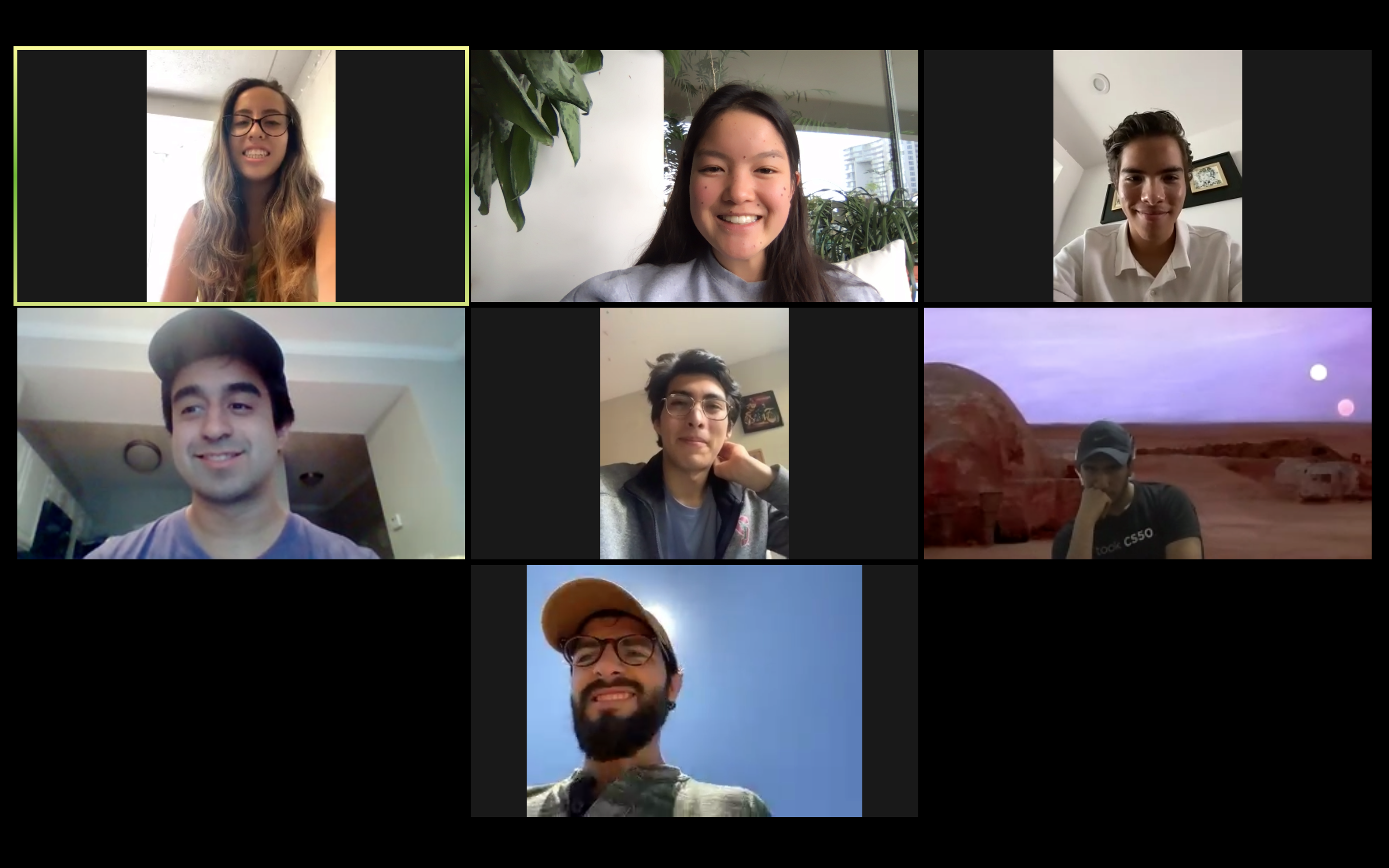A group of Stanford, MIT, Harvard and Brown students have proposed using a machine learning chatbot to decongest COVID-19 self-reporting hotlines in Peru, an idea developed as a part of an MIT hackathon addressing international COVID-19 issues. The team named their project Simi, “which has connotations with mouth and communication” in Latin America, according to group member and Stanford student Valeria Wu ’22.
The hackathon on June 20 featured four unique policy tracks: identifying the COVID-19 immune, new ways to deliver care in a COVID-19 world, health systems asset coordination and healthcare workforce well-being. The hackathon hosted a diverse set of students, doctors, government officials and industry professionals from all around the world. Participants were given 48 hours to work on their project remotely, after which they had to present a proof of concept for their product.
The Simi team spoke with an official from EsSalud, a major medical services provider in Peru, and discovered a variety of local issues with their 113 Hotline that serves to facilitate self-reporting of COVID-19 in Peru. When citizens report their symptoms in the hotline, the government sends medical teams to homes with symptoms and administers the COVID-19 test on callers. According to the group, the hotline receives over 80,000 calls a day, handled by 70 staff. The biggest issue — approximately 70% of these calls are prank calls that waste the staff’s time and resources.
As a solution, the Simi team presented an automated text message robot where citizens could text and communicate in Spanish to complete a short questionnaire focused on common symptoms of COVID-19. The robot begins by asking for the user’s DNI (the Peruvian equivalent to a social security number) to validate the user’s identity before completing the questionnaire. Then using the user’s responses and a database of symptom data, the robot diagnoses the user for the possibility of having COVID-19, in which case a medical team is sent.
The final product wasn’t the initial iteration of the idea; at the beginning of the hackathon, the team had been pursuing different path. Leaning on their primary background in computer science, the group had imagined a gig economy platform connecting out-of-work citizens with incoming calls, supplementing the professional staff. However, they quickly realized that only 60% of the population had access to a reliable internet connection, and pivoted to native smartphone solutions.
“At the beginning of the hackathon, we had this false idea that you can tackle all the problems you want at once,” Wu explained. “We were going to fix unemployment, we were going to fix the hotlines and we were going to fix coronavirus. That was really not the case.”
In many ways, the group expressed their appreciation to Stanford for providing the opportunity to attend the hackathon and connecting them with other Latin American students on campus and from MIT and Harvard. Santiago Hernandez ’23, a group member and Stanford undergraduate noted that “Stanford helped this happen in every way possible … Since we were all good friends, there was a lot of trust and we knew about the style and specialties of everyone on the team.”

According to group member and MIT student Jose Lavariega-Gomez ’22, one of the major challenges within the project was gaining access to an effective database of COVID-19 medical data. The Simi team needed that data to build an algorithm that predicted whether or not a patient had coronavirus based on the symptoms they reported. As the pandemic has gotten more serious, much of the collected data has been centered in Europe, leaving the model vaguely trained on international statistics rather than specific local information.
The solution was building a custom dataset for the project “using the demographics of Peru, the national census data and also various international medical databases,” Lavariega-Gomez added that a large majority of the technical time on the project, almost 12 hours, was spent building this 100,000-column dataset.
Since being declared a winning team of the hackathon, the group has plans to move the project forward by using a mixture of public and private funding. According to the group, they are “in talks” with companies including IBM and Claro, and hope to give it to the Peruvian government later in the future.
Group member Marcelo Peña ’23 recounted his excitement at that possibility: “This project is in its very beginning stages, meaning we have to think about not only our vision for this, but also how we want to execute it better.”
Aside from the technical details of the project, Harvard student and group member Rodrigo Chaname believes the single most valuable takeaway were the bonds built through the project.
“Very few people have talked about what’s next,” Chaname said. “Not about whether we get an investor or develop the technology or get bought, but that we have become friends.”
Of all the new experiences and opportunities, Brown student and group member Valerie Aguilar Dellisanti ’23 explains that the most gratifying aspect was that the hackathon organizers “choose to help the Hispanic people.”
“The help doesn’t have to come from outside,” she added. “It’s not always the savior complex of other countries, but [instead] we have the tools to help our own people.”
Contact Devin Gupta at devin.gupta.dg ‘at’ gmail.com.
